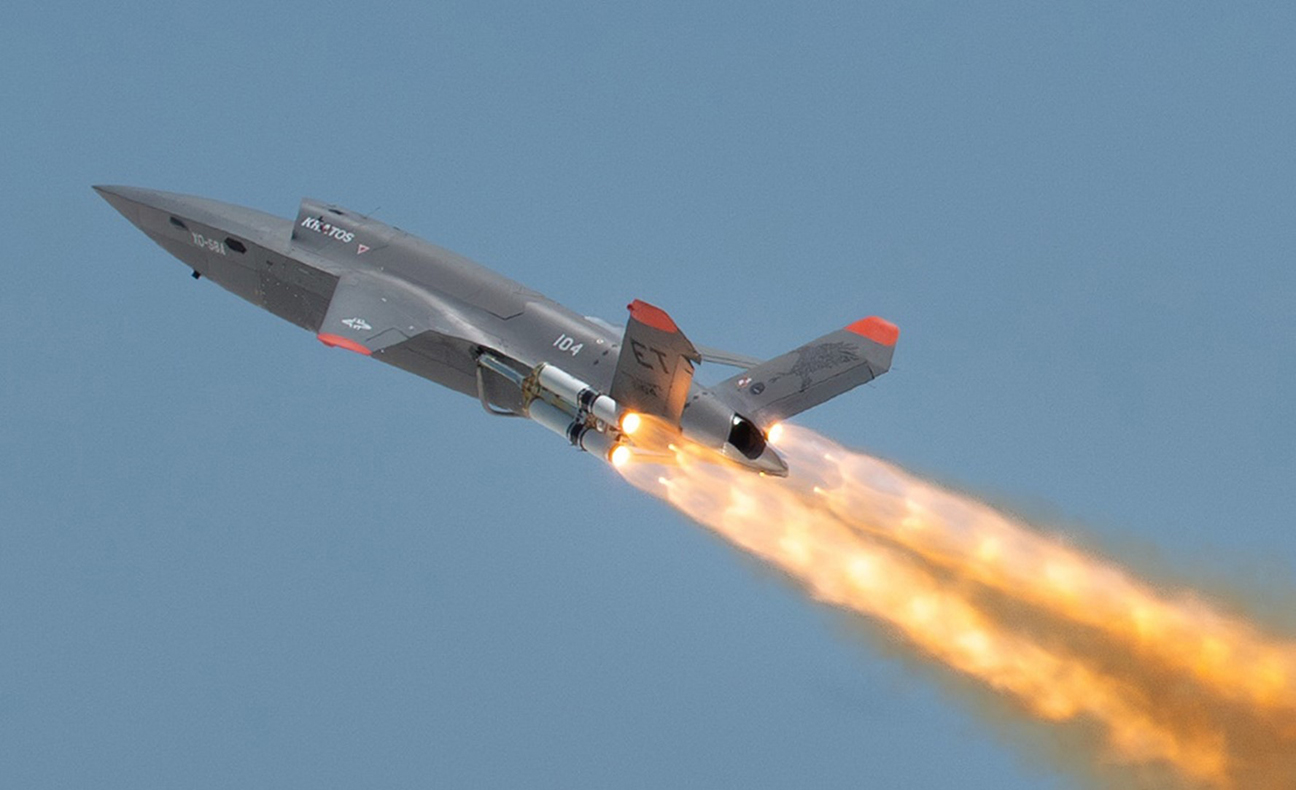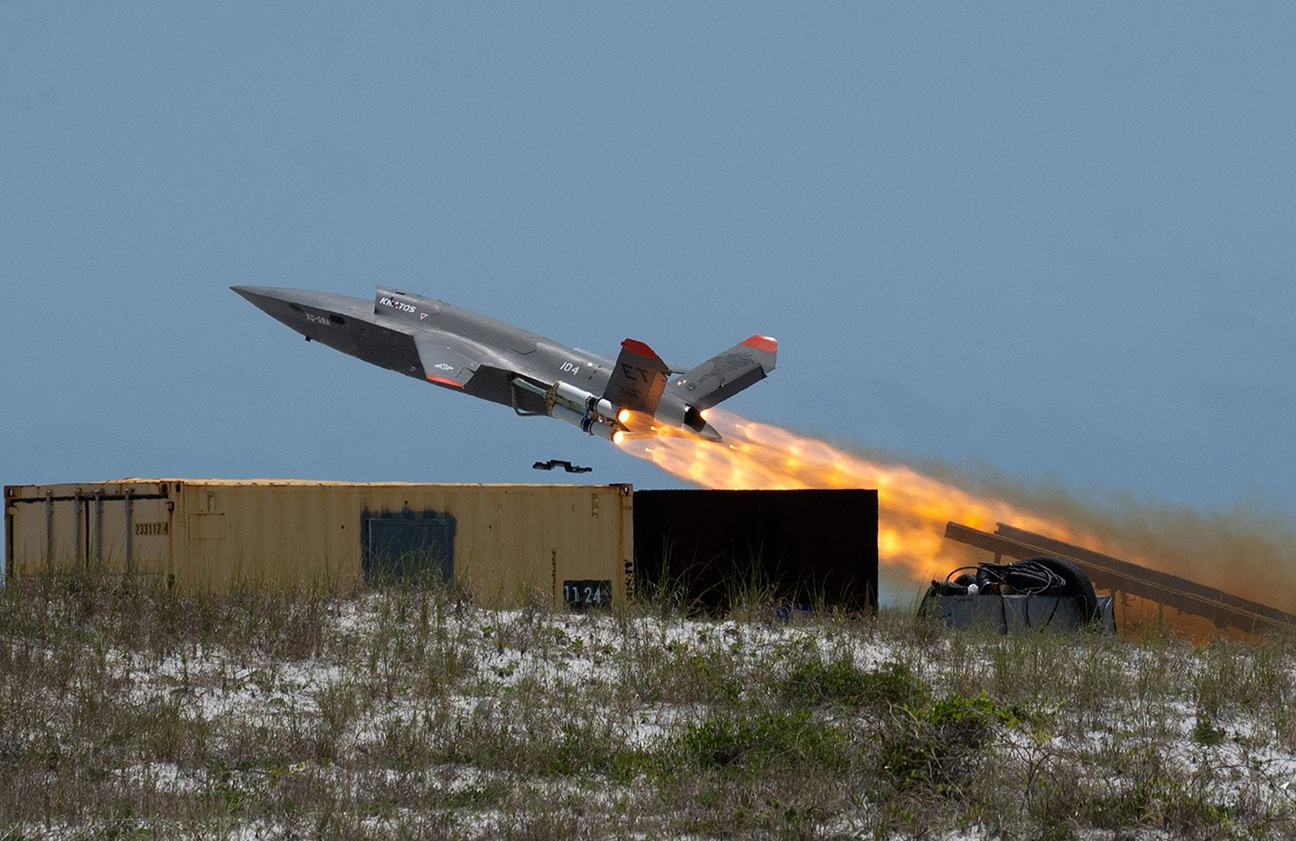Air Force advances human-machine teaming with autonomous collaborative platforms
EGLIN AIR FORCE BASE, Fla. – The U.S. Air Force recently demonstrated a major leap in human-machine teaming, flying autonomous collaborative platforms (ACPs), alongside crewed fighter aircraft during a training event at Eglin Air Force Base, Florida. Pilots operating an F-16C Fighting Falcon and an F-15E Strike Eagle each controlled two XQ-58A Valkyrie aircraft in an air combat training scenario, showcasing real-time integration between manned and semi-autonomous systems.

A U.S. Air Force XQ-58A Valkyrie, an autonomous, low-cost tactical unmanned air vehicle, flies over Eglin Air Force Base’s Gulf Test and Training Range. The recent test flight and data collected will inform future air operations and contribute to advanced autonomous programs. (U.S. Air Force photo by Ilka Cole)
As a key enabler of future airpower, ACPs provide affordable, runway-flexible capabilities that can operate semi-autonomously in high-risk environments. In contested environments, ACPs can serve as force multipliers while enabling operators to retain strategic and ethical oversight. This recent flight marked a pivotal step in their integration into air combat—reducing pilot workload while enhancing situational awareness and mission effectiveness.
“This test with ACPs directly addresses the evolving requirements of modern warfare and the needs articulated by our warfighters,” said Gen. Ken Wilsbach, commander of Air Combat Command. “We are committed to innovation and integrating ACPs through these kinds of demanding, operator-driven evaluations that allow us to learn rapidly and enhance our human-machine teams. This approach is fundamental to sharpening our combat capabilities, maintaining air superiority and ensuring we can effectively support the joint force in complex future environments.”
This achievement, supported by the Department of Defense’s Rapid Defense Experimentation Reserve program under the Office of the Undersecretary of Defense for Research and Engineering, and executed by Air Force Materiel Command’s Air Force Research Laboratory and Air Force Test Center, Air Combat Command, and U.S. Navy demonstrates a joint approach to capability development that is responsive to operational needs.

A U.S. Air Force XQ-58A Valkyrie, an autonomous, low-cost tactical unmanned air vehicle, blasts off during a test flight at Eglin Air Force Base. The test flight and data collected will inform future air operations and contribute to advanced autonomous programs. (U.S. Air Force photo by Ilka Cole)
“With this flight, we mark a crucial step in developing capabilities that harness human-machine teaming to overcome complex threats and expand our advantages,” said Brig Gen. Jason E. Bartolomei, commander of Air Force Research Laboratory. “By developing and integrating autonomous platforms with manned systems, we can quickly adapt, increase combat effectiveness, and reduce risk to our aircrews in contested environments.”
Data from the recent flight demonstration will inform future development and deployment of semi-autonomous capabilities across the Department of Defense. As the Air Force modernizes to meet the demands of a more contested and complex operating environment, human-machine teaming with ACPs will be vital to delivering credible mass, operational flexibility and mission success.
About AFRL
The Air Force Research Laboratory, or AFRL, is the primary scientific research and development center for the Department of the Air Force. AFRL leads the discovery, development and integration of affordable warfighting technologies for our air, space and cyberspace forces. With a workforce spanning across nine technology areas and 40 other operations across the globe, AFRL provides a diverse portfolio of science and technology ranging from fundamental to advanced research and technology development. For more information, visit www.afresearchlab.com.
